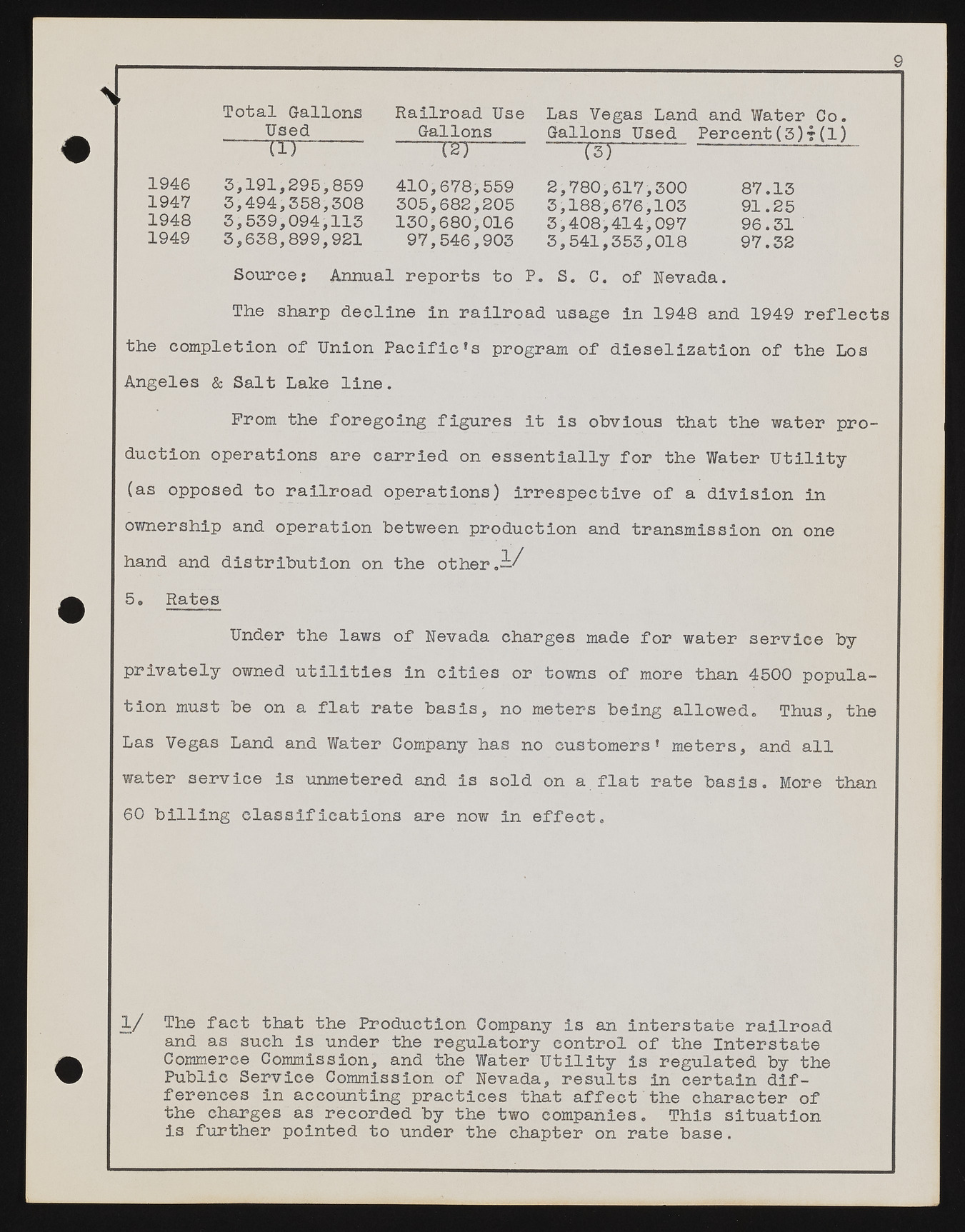Copyright & Fair-use Agreement
UNLV Special Collections provides copies of materials to facilitate private study, scholarship, or research. Material not in the public domain may be used according to fair use of copyrighted materials as defined by copyright law. Please cite us.
Please note that UNLV may not own the copyright to these materials and cannot provide permission to publish or distribute materials when UNLV is not the copyright holder. The user is solely responsible for determining the copyright status of materials and obtaining permission to use material from the copyright holder and for determining whether any permissions relating to any other rights are necessary for the intended use, and for obtaining all required permissions beyond that allowed by fair use.
Read more about our reproduction and use policy.
I agree.Information
Digital ID
Permalink
Details
More Info
Rights
Digital Provenance
Publisher
Transcription
I Total Gallons Used Railroad Use Gallons Las Vegas Land and Water Gallons Used Percent(3) (1 ) ~T&) (3) 1946 3,191,295,859 410,678,559 1947 2,780,617,300 87.13 3,494,358,308 305,682,205 3,188,676,103 91.25 1948 3,539,094,113 130,680,016 3,408,414,097 96.31 1949 3,638,899,921 97,546,903 3,541,353,018 97.32 Source; Annual reports to P. S. G. of Nevada. The sharp decline in railroad usage in 1948 and 1949 reflects the completion of Union Pacific’s program of dieselization of the Los Angeles & Salt Lake line. Prom the foregoing figures it is obvious that the water production operations are carried on essentially for the Water Utility (as opposed to railroad operations) irrespective of a division in ownership and operation between production and transmission on one hand and distribution on the other. 1 / 5. Rates Under the laws of Nevada charges made for water service by privately owned utilities in cities or towns of more than 4500 population must be on a flat rate basis, no meters being allowed. Thus, the Las Vegas Land and Water Company has no customers’ meters, and all water service is unmetered and is sold on a flat rate basis. More than 60 billing classifications are now in effect. 1/ The fact that the Production Company is an interstate railroad and as such is under the regulatory control of the Interstate Commerce Commission, and the Water Utility is regulated by the Public Service Commission of Nevada, results in certain differences in accounting practices that affect the character of the charges as recorded by the two companies. This situation is further pointed to under the chapter on rate base.

